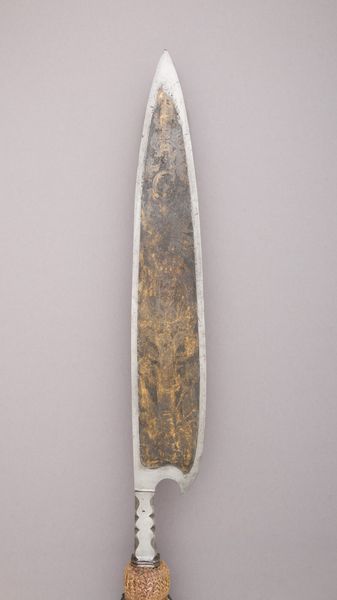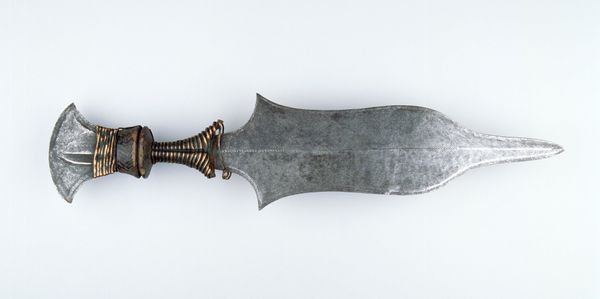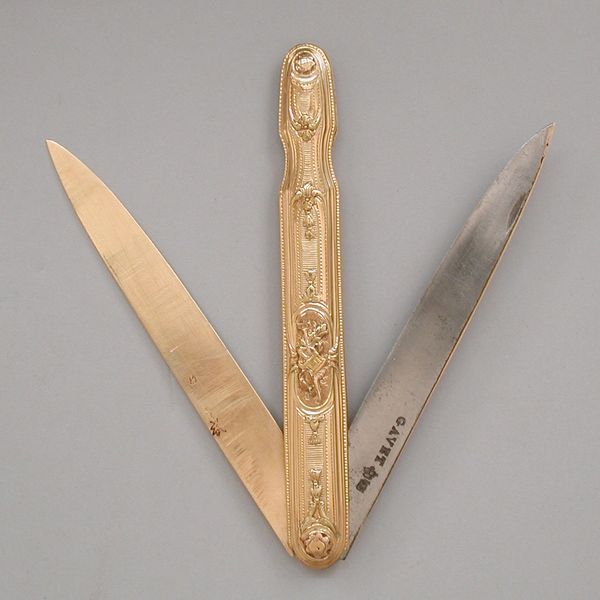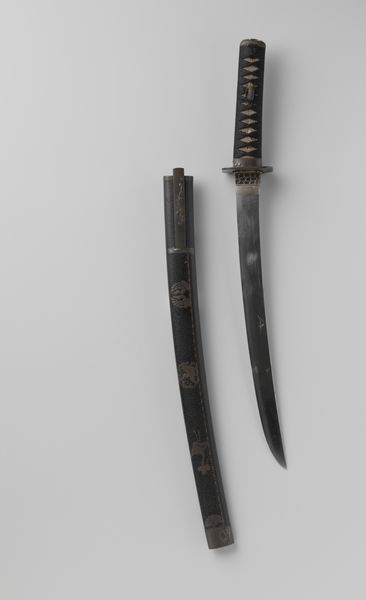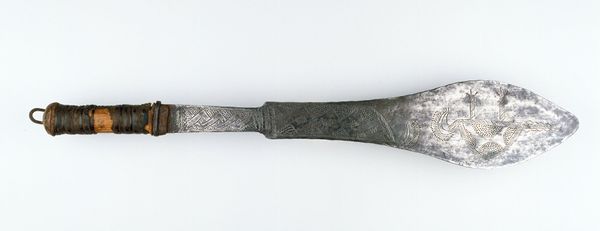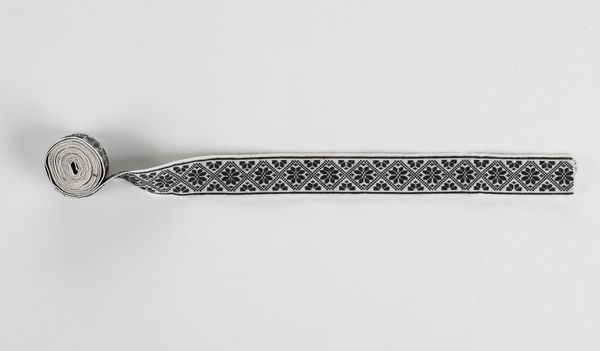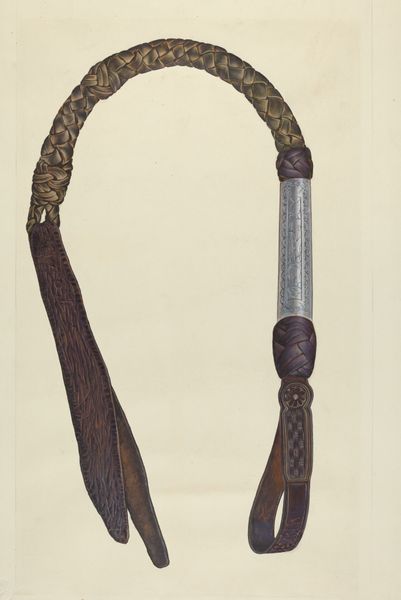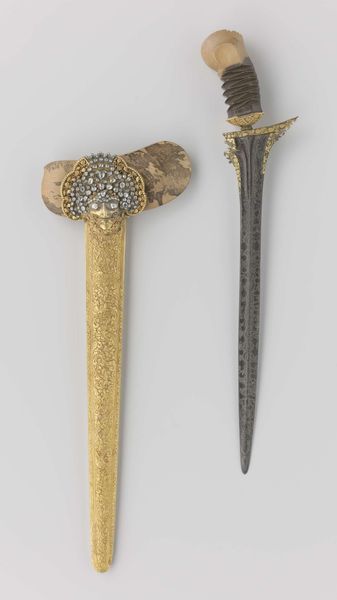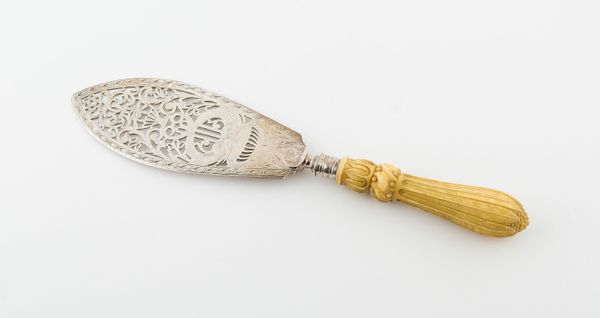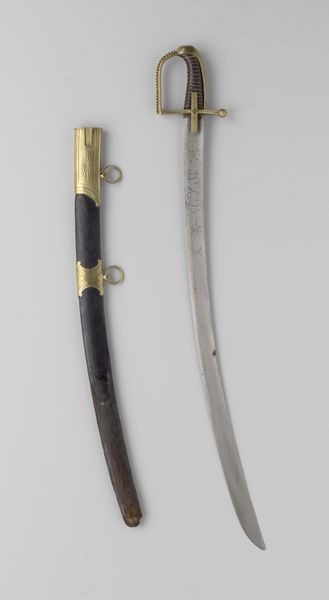
metal, sculpture, engraving
#
weapon
#
metal
#
sculpture
#
ancient-mediterranean
#
sculpture
#
armor
#
engraving
Dimensions: L. 100 1/2 in. (255.27 cm); blade L. 23 in. (58.42 cm)
Copyright: Public Domain
Curator: Alright, let’s talk about this striking piece. It’s a glaive, crafted in 1577 for Emperor Rudolf II, who reigned from 1576 to 1612. It’s currently held at the Metropolitan Museum of Art in New York. The piece is signed by Hans Sumersperger, a German armourer who made his home in Vienna. Editor: My goodness, that thing looks like it could star in some epic fantasy film. I immediately feel the weight of it, not just physically, but the symbolic weight. What sort of impact do you think it would make coming down on the enemy during war? Curator: A glaive, you see, is a polearm weapon— a single-edged blade mounted on a long shaft. The raw materials themselves: the forged metal of the blade, the wooden shaft, and the silken tassel indicate power through resource control and skilled craftsmanship. A war weapon with such attention to ornamentation is inherently intriguing, indicating value as more than its initial design. The deep engraving is particularly nice. Editor: Right, its primary function is battle. I find myself getting a shiver down my spine thinking about war. I imagine being the man to hold this glaive; would it make me a king? Powerful as one, at least. It does give one some sense of grandeur despite its simplicity. Is the ornamentation trying to distract us from the deadly intent of the object, perhaps? Or elevate it? Curator: Possibly both. Emperor Rudolf II, known for his patronage of the arts and sciences, would have likely valued the glaive as much for its artistry as its martial purpose. The engraved decoration also tells a story; in some respects, we can assume that he wanted to relay this story of power and victory over all enemies with such symbolism that could have easily impressed or intimidated those he knew. I can appreciate its value as it would relate to commodity fetishism; to view an object like this through the socio-economic relations between those who produced this product and the society as a whole reveals its meaning, one beyond combat and something else of value. Editor: Fascinating. To me, this glaive is a visceral reminder of history's violent beauty. And I hadn't considered this perspective either. All this from one deadly spear... Curator: Indeed. It invites us to think about the relationship between power, craft, and artistic expression. Editor: Well, that gives me a lot to mull over. Thank you.
Comments
No comments
Be the first to comment and join the conversation on the ultimate creative platform.

